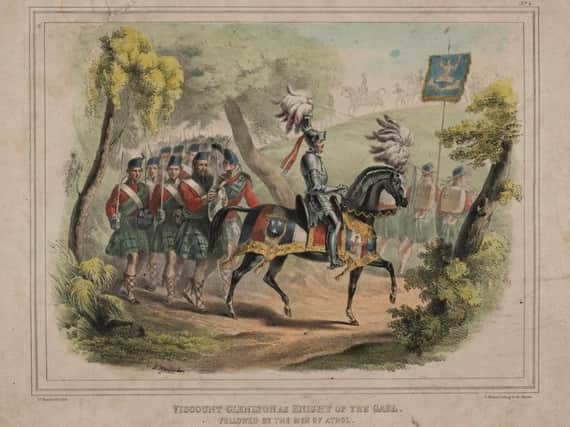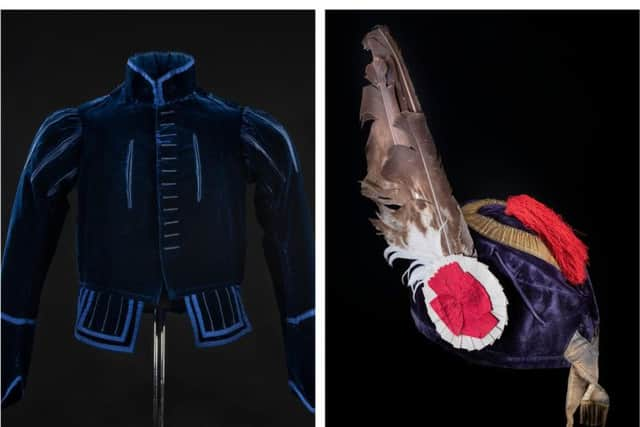The lavish Scottish revival in jousting that drew people from around the world


It cost around £2.5m in today's money to put on, and pitted aristocrat against aristocrat in a flamboyant show of medieval-style jousting that was enjoyed by 100,000 visitors from all over the United Kingdom as well as the United States.
Although there was a craze for medieval costume balls in the 19th century, it was not until August 1839 that a mock-medieval tournament was held in Britain, at Eglinton Castle in Ayrshire, in south west Scotland.
Advertisement
Hide AdAdvertisement
Hide Ad

The tournament was organised by Archibald Montgomerie, 13th Earl of Eglinton. It was held at his family estate at a cost of approximately £2.5 million in today’s money.
Staging re-enactments was not a 19th-century invention. Henry VIII of England attended a re-enactment of a medieval archery contest in 1516 and the re-enactment of battles had been part of royal and military pageants since Roman times.
However, the Eglinton tournament was the first civilian, unofficial re-enactment in Britain and is part of the history of re-enactment groups that continue to this day.
The way this tournament differed to today was that the knights taking part were not actors, volunteers or professional stunt-men, but young British nobles
. The event was planned as a real tournament and envisaged as the start of a regular sporting event. Only people with independent wealth could afford to buy antique armour, reproduction weapons, horse-armour, and costumes for their men-at arms and pages. The cost was so high that of the 150 people who had been interested in participating in the tournament, only 13 jousted in the final event.
One of the most famous knights was Viscount Glenlyon, George Murray, who competed under the name of the ‘Knight of the Gael’. Glenlyon was the nephew and heir to the 5th Duke of Atholl and for the tournament created his own ceremonial bodyguard of Atholl Highlanders using tenants from his family estate at Blair.
Glenlyon spent the equivalent of £90,000 equipping himself and his retinue, which included an Elizabethan costume made with velvet Murray of Atholl tartan as his outfit for the ball.
Throughout the planning for the tournament, there was a genuine interest in historical accuracy. Accounts of the tournament, some of them beautifully illustrated books, described the historical details of the armour and the costumes worn by both competitors and spectators.
Advertisement
Hide AdAdvertisement
Hide AdThe accounts written at the time applauded the Highland outfits, weapons and military exercises that the Atholl Highlanders performed during the event. Unfortunately, the event was at the whim of the Scottish weather. The tournament was meant to run for four days. Torrential rain on the first day ruined many people’s costumes, caused armour to rust and turned the field into a muddy quagmire making it difficult to joust. Knights in full armour carrying umbrellas looked comical and the expensive outfit of the Queen of Beauty, Lady Seymour, could hardly be seen in her covered tent. To top it off, the marquees were completely flooded meaning the planned banquet and ball had to be cancelled.
There were no jousts on the second day while repairs were made to the tents, and armour was polished and fixed.
On the third day the sun came out, so the knights could joust and stage a mock-battle in better conditions. The ball and banquet were rescheduled and in the end Lord Eglinton was commended for making the best of a bad situation.
The reviews of the tournament in the press were mixed. Some criticised it as an expensive aristocratic folly. The jousts were not as exciting as the spectators had hoped and the ball was like any another medieval costume ball. However, despite this, the tournament was also hugely popular and supporters of the event congratulated Lord Eglinton for encouraging a return of chivalric ideals to modern industrial Britain. People travelled from not only across Britain to attend, but from as far afield as America to witness this modern-day display of knightly gallantry.
What is really interesting is how this tournament engaged the public imagination. Around 100,000 people came to watch over the three days. There were only 4000 ticketed seats but the tilting field was set up so spectators could watch from the sloping ground outside the boundary fence. Even on the day when nothing was happening, many people came just to see the site.
Before and after the tournament the circulating libraries of Edinburgh and Glasgow experienced a surge of people borrowing books on medieval history and Sir Walter Scott’s novel Ivanhoe. The Eglinton tournament then inspired serious (and comedic) theatre, literature, souvenirs and art for decades afterwards, becoming an integral part of public perceptions of the medieval past.
Although the Eglinton tournament did not turn out as planned, the event boosted 19th-century public interest in the medieval past. For all its faults, the organisers strove to be historically accurate and it was still being talked about in the 20th century.
- Wild and Majestic: Romantic Visions of Scotland is on at the National Museum of Scotland until 10 November 2019.
This article first appeared on the NMS blog
